History
Wykagyl Country Club traces its origins all the way back to 1898, a time when golf in America was just taking shape with the construction of the first courses in Westchester County and other parts of the Northeast.
Today, Wykagyl is one of the most enjoyable and beautiful courses in the country and it all started when a group of ardent sportsmen - anxious to pursue the new game - met and formally organized the Pelham Country Club (no relation to the present club of the same name). Land was leased, and a nine-hole course was staked out on a tract just beyond the New Rochelle line, on the north side of the Boston Post Road. Soon after its formation the Club boasted 125 Members.
Cradle of the PGA
Wykagyl Country Club traces its origins all the way back to 1898, a time when golf in America was just taking shape with the construction of the first courses in Westchester County and other parts of the Northeast.
Today, Wykagyl is one of the most enjoyable and beautiful courses in the country and it all started when a group of ardent sportsmen - anxious to pursue the new game - met and formally organized the Pelham Country Club (no relation to the present club of the same name). Land was leased, and a nine-hole course was staked out on a tract just beyond the New Rochelle line, on the north side of the Boston Post Road. Soon after its formation the Club boasted 125 Members.
In 1904, however, a new owner acquired the land and immediately ordered the Club to vacate his property. The determined members found a new home in New Rochelle: the farm of one Livingston Disbrow. An agreement gave the Club the right to lease the Disbrow land for three years at $3,500 per year, with an option to buy for $750 an acre. Three years later, the property was purchased, and the Club found its permanent home.
|
|
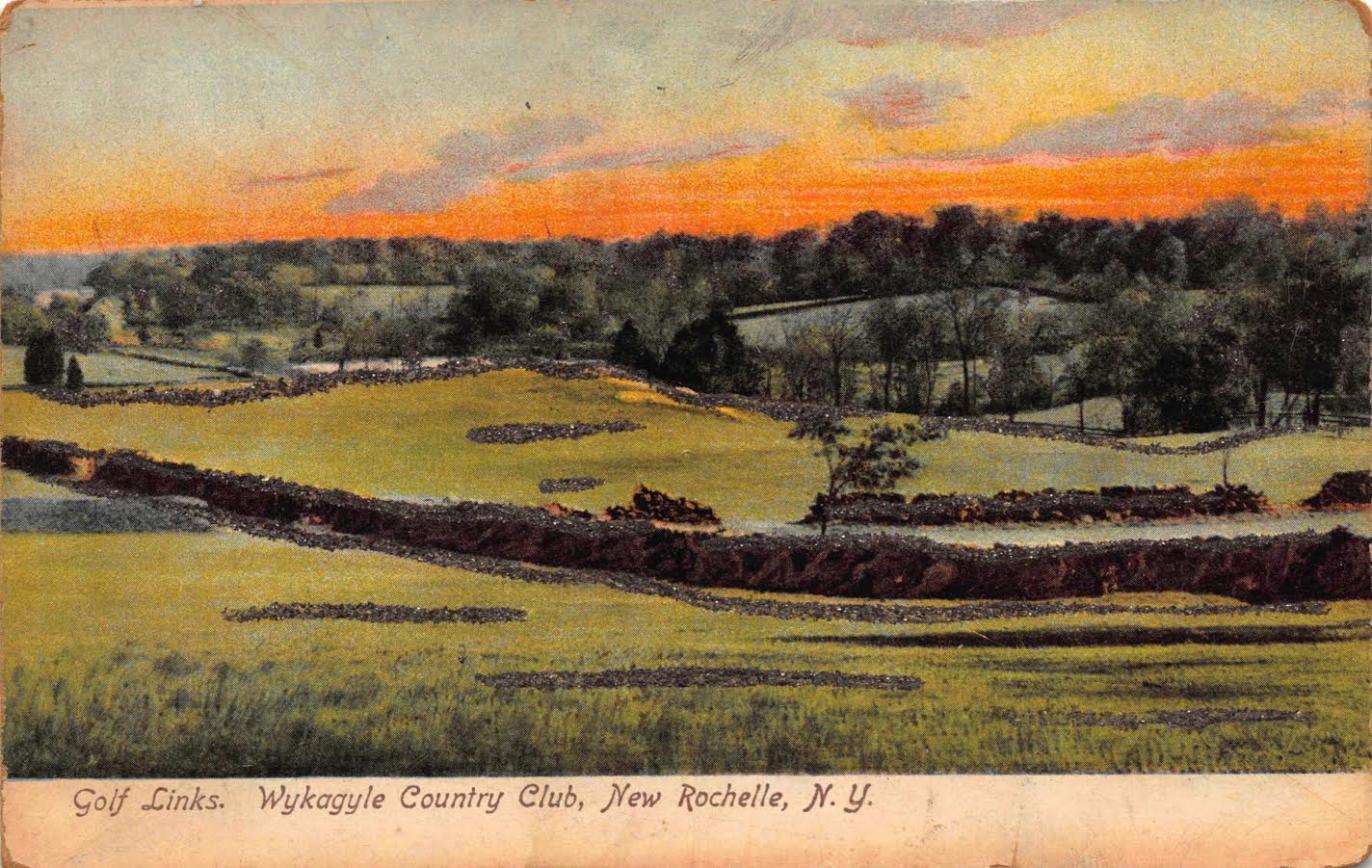
|
|
The Disbrow land had a history of its own. Over the acres where wedges and five irons now cut through grass, Indians and early pioneers of Dutch and Huguenot ancestry once roamed. In fact, the history of the land probably gave the Club its name, though the story of how the prestigious and colorful title came into being has a mysterious and amusing twist.
The move from Pelham Manor to New Rochelle meant, among other things, that the Club needed a new name. One of the original Members, William K. Gillett, was appointed to be a committee of one to pick a name. He came up with Wykagyl. For many years it was thought that Gillett had simply taken the letters W, K, G, and L from his own name, changed the I's to Y's, added an A in the middle for euphony and found a distinctive name for the club, and his own private joke to chuckle over.
Years later, the secretary of the Club, Henry T. Brown, uncovered an Old Dutch map of early New York with the location of Indian tribes and villages. The Club bulletin of 1925 claimed the name was from wigwos (birch bark) and keag (country), the country of the birch bark.
|
|
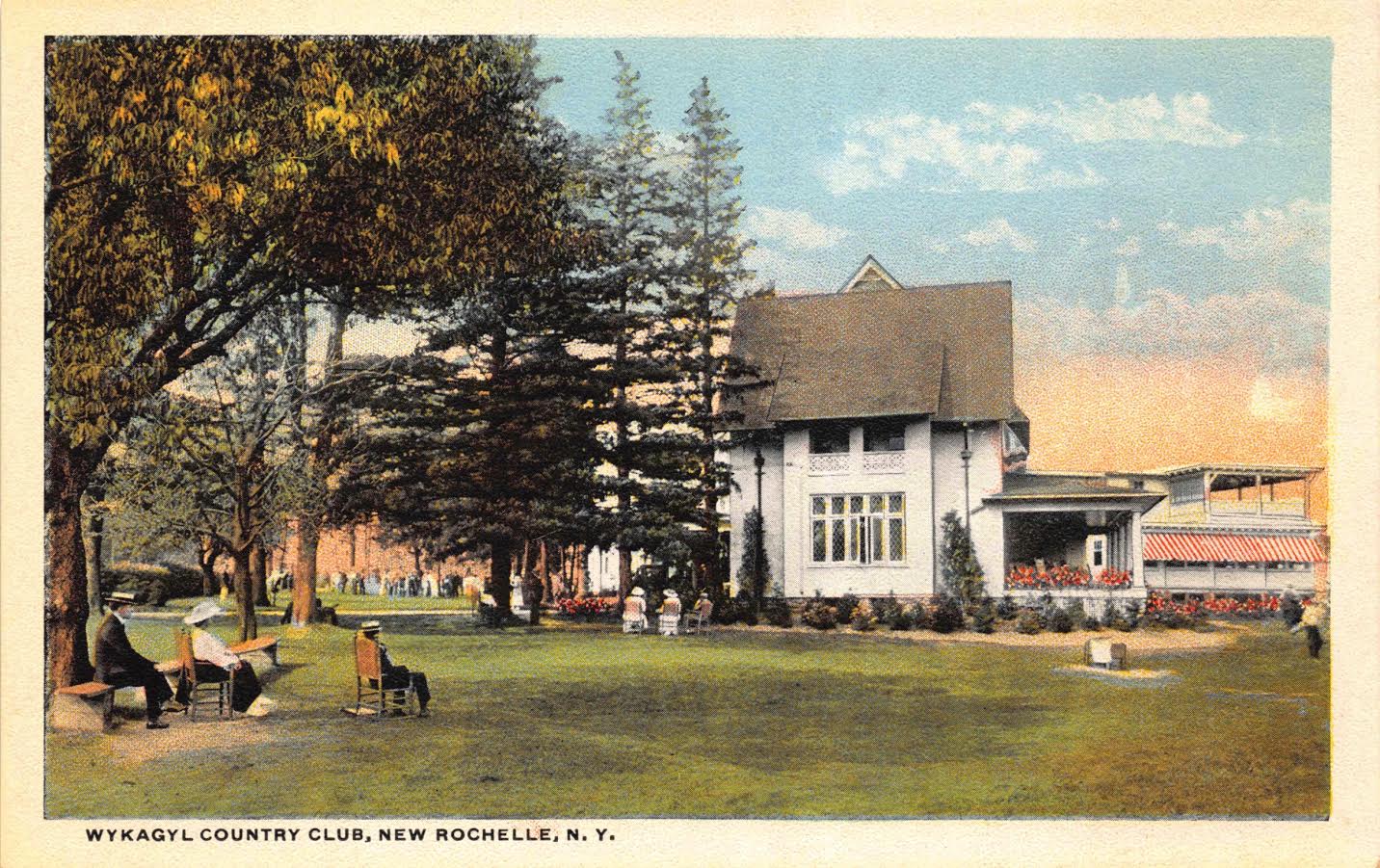
|
|
Whatever its origin, the name won instant approval. A court order was signed decreeing that as of June 15, 1905, the old Pelham Country Club would henceforth be known as The Wykagyl Country Club, and so it has been to this very day.
The original course was laid out by Lawrence E. Van Etten, who had joined the Club in Pelham in 1904. So fast did Van Etten work that by April 1, 1905, the first nine holes were in play and by August the back nine was ready. Amazingly, several Club tournaments were held that year and a Club championship decided. The winner was William K. Gillett, the same fellow who had given Wykagyl its name.
|
|
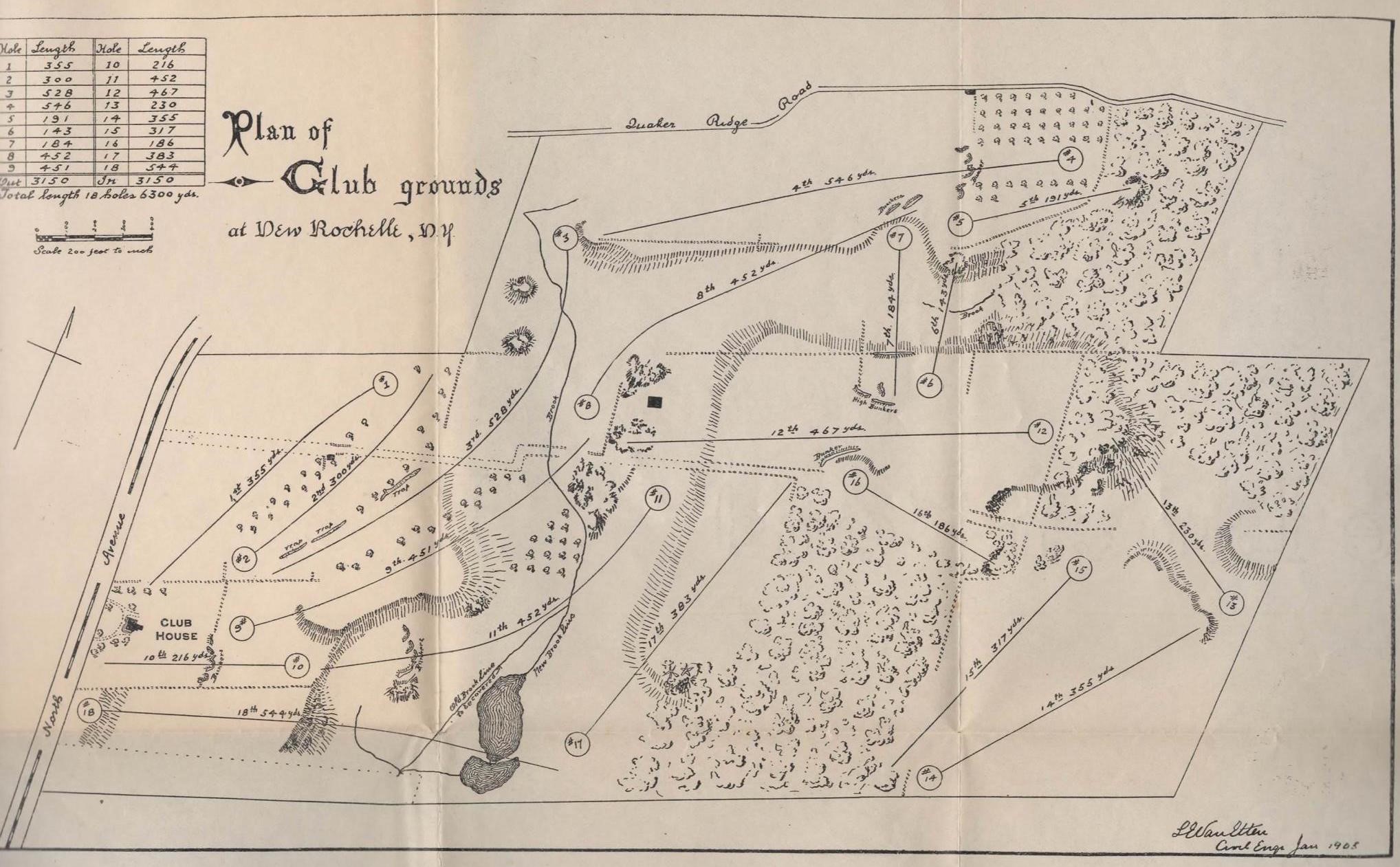
Van Etten Course Map from 1905
|
|
In spite of primitive conditions, the young club flourished. Besides golf, other sporting activities also took place, among them, trapshooting and tennis. Trapshooting was eventually discontinued, and though tennis was played for a number of years, the lone court was replaced by a practice putting green in 1932. It was not until 1972 that the present courts were built. Golf, then as now, was king at Wykagyl. With the Club's continued success came the need to improve the clubhouse. Up until 1915 it had been the old Disbrow farmhouse, but on October 20th of that year, a remodeled and refurbished clubhouse opened. The Club threw quite a party complete with 500 guests to celebrate the occasion. The New Rochelle Standard reported: "With the new building, the Club now takes its place among the leading country clubs, not only of the East, but in the whole country as well."
Wykagyl's Golf Heritage
No sooner had the Club upgraded its facilities when its Members decided it was time to improve the golf course, which had not been altered since it was originally laid out in 1905. An October 1915 article in The New York Times gave a hole-by-hole account of the course, cited the sixth hole (our present seventh) as one that "called for Alpine training" and the sixteenth (which resembled today's) as one that required "a drive from a dizzy height to a green 190 yards away." The 18th hole, which was then known as "cardiac hill," did not escape the descriptive phrasing of the reporter. A par 5 hole, which began from the current Ladies' tee and continued past the present green and tennis court area to a green adjacent to North Avenue required, in his words, "three perfect shots and another stupendous climb." He concluded, "It is only by remembering that the clubhouse is at the top of this mountain that the portly Member even summons up courage to attempt the ascent." The more knowledgeable Harry Vardon, the great English pro said, after playing the old 18th several times, that it was one of the greatest golf holes he had ever tackled.
|
|
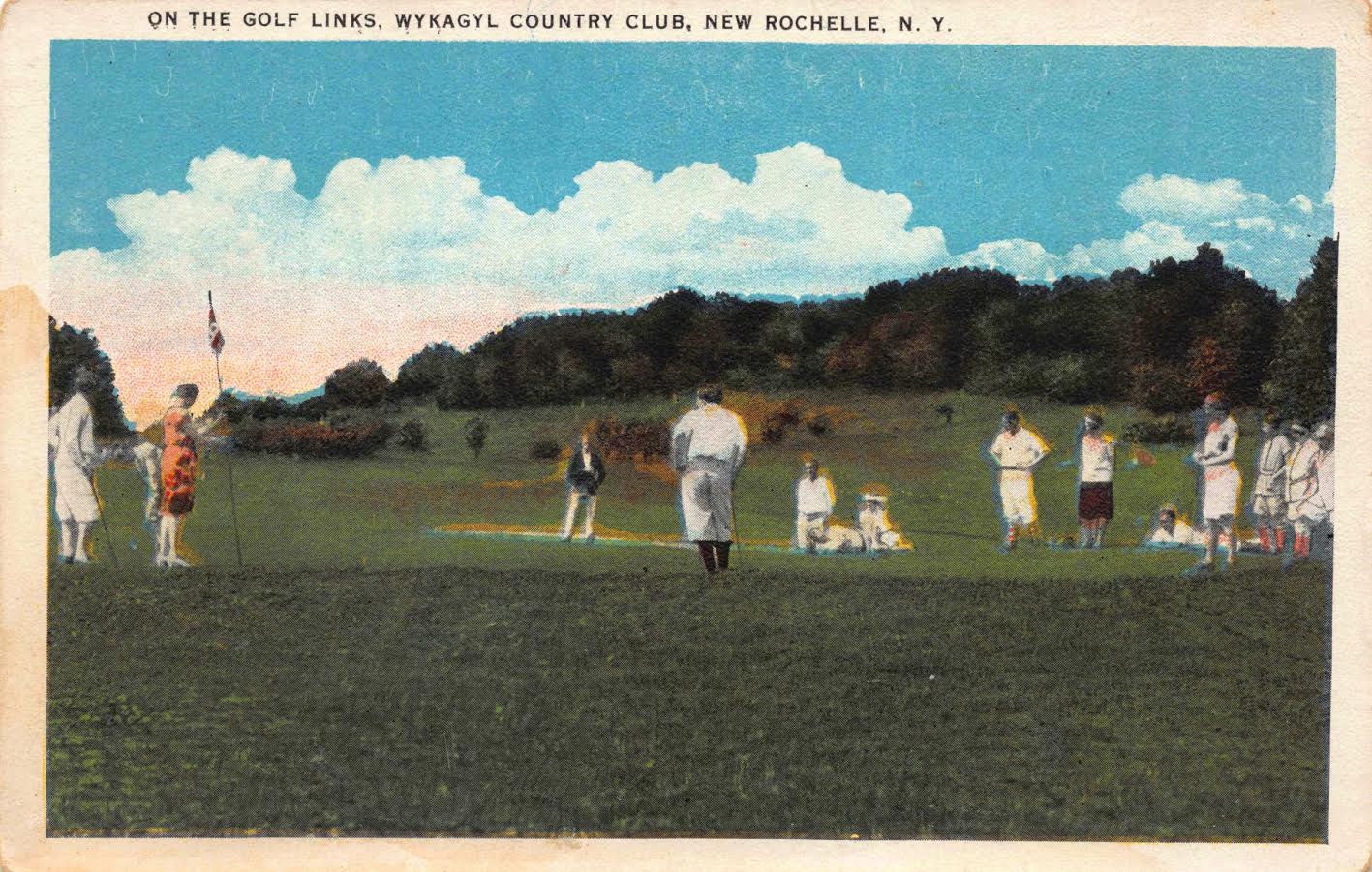
|
|
The course was subsequently changed in steps by two renowned golf architects. In 1919, Donald Ross redesigned several holes, in the process introducing superior playing angles (notably at the 8th and 15th holes) and adding several bunkers, including the Hell’s Half Acre on 12. In the 1930s, A.W. Tillinghast eliminated the original 1st and 2nd holes in order to provide room for a practice area, added the stretch of the current 4th through 6th holes, introduced a completely new 17th hole, and shortened the 18th by 165 yards, making it a par four. Play on the Tillinghast-modified course began on Labor Day, 1931.
As the facilities and course were being upgraded, two famous Wykagyl personalities - Val Bermingham and Clare Briggs - were putting their indelible stamp on the Club. It would be fair to say that the years 1905 to 1932 can properly be designated as the Bermingham era at Wykagyl. In that time, Val won 20 Club championships, which stood for many years as a national record, according to the U.S.G.A.
If Val made the name of Wykagyl prominent locally due to his golfing prowess, Clare Briggs caused it to be known throughout the country through his series of golfing cartoons, which were published for years in the New York Tribune and syndicated nationally. Briggs also illustrated the popular book The Duffer’s Handbook of Golf by Grantland Rice. Wykagyl was the setting for Briggs’s humorous drawings, using the names of many of his cronies from the Club in his cartoons.
Wykagyl has paid tribute to these two favorite sons by naming days after them. Now the golfing season starts on Bermingham Day and closes on Briggs Day. It seems fitting. Opening day is a time for hopes and dreams, when golfers set out to emulate the skills of Val. Briggs Day, marking the end of another season, is a time to stow the clubs away and "live it up" somewhat in the manner of the ebullient Clare.
|
|
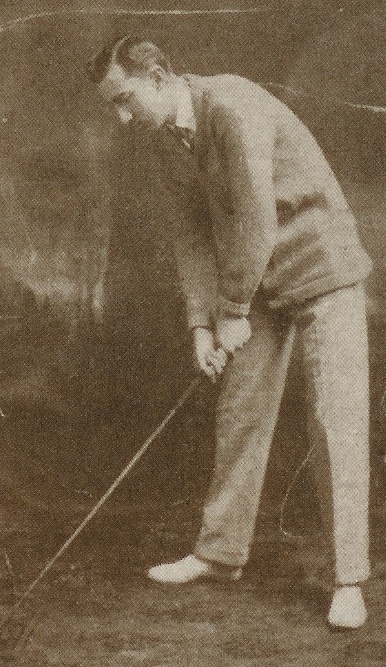
Val Bermingham
|
|
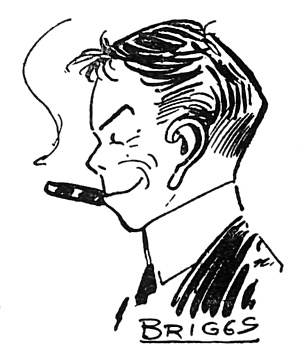
Clare Briggs Self-Illustration
|
|
Briggs and Bermingham played amongst some skilled company in those early years. Wykagyl was a favorite course for top flight pros and amateurs, both American and British. Walter Hagen, George Duncan and Bobby Jones were among legendary golfers who played at Wykagyl.
Beyond the golf heritage and accomplishments of its own members, Wykagyl enjoys a unique station in the annals of professional golf history. The first organizational meeting of the fledgling Professional Golfers Association was held at Wykagyl in 1916, and its first president was Robert White, Wykagyl's Head Golf Professional from 1922 through 1926. The first U.S. Open Championship in 1895 was won by Horace Rawlins, who was Head Professional at Wykagyl in 1905 and 1906. Alex Smith, Wykagyl’s head professional from 1908 through 1919, won the U.S. Open in both 1906 and 1910. In 1913, Wykagyl was the site of a match between Smith and his brother Macdonald Smith (an assistant professional at Wykagyl) against Harry Vardon and Ted Ray immediately following Francis Ouimet’s upset victory in the U.S. Open at the Country Club in Brookline. The Smith brothers handed Vardon and Ray their only match play defeat in their American tour.
|
|
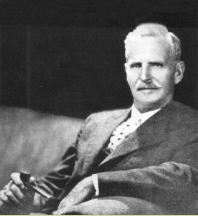
Robert White
|
|
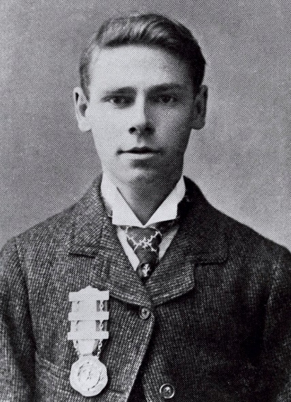
Horace Rawlins
|
|
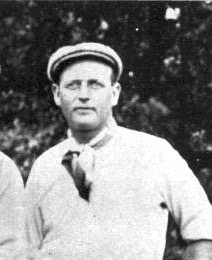
Alex Smith
|
|
Wykagyl has also hosted many professional tournaments. These include the Red Cross Tournament in 1944, the Palm Beach Round Robin from 1948 through 1952, 1956 and 1957, the LPGA Talk Tournament in 1977, the LPGA Golden Lights Championship from 1978 through 1980, the LPGA Chrysler-Plymouth Classic in 1982, the LPGA Master Card International Pro-Am in 1984, the Japan Airlines Big Apple Classic from 1990 through 2000, the LPGA Sybase Classic from 2001 through 2006, and the 2007 HSBC Women's World Match Play Championship. The club also held the Ike Championship in 2013 and the Metropolitan Open in 2018.
|
|
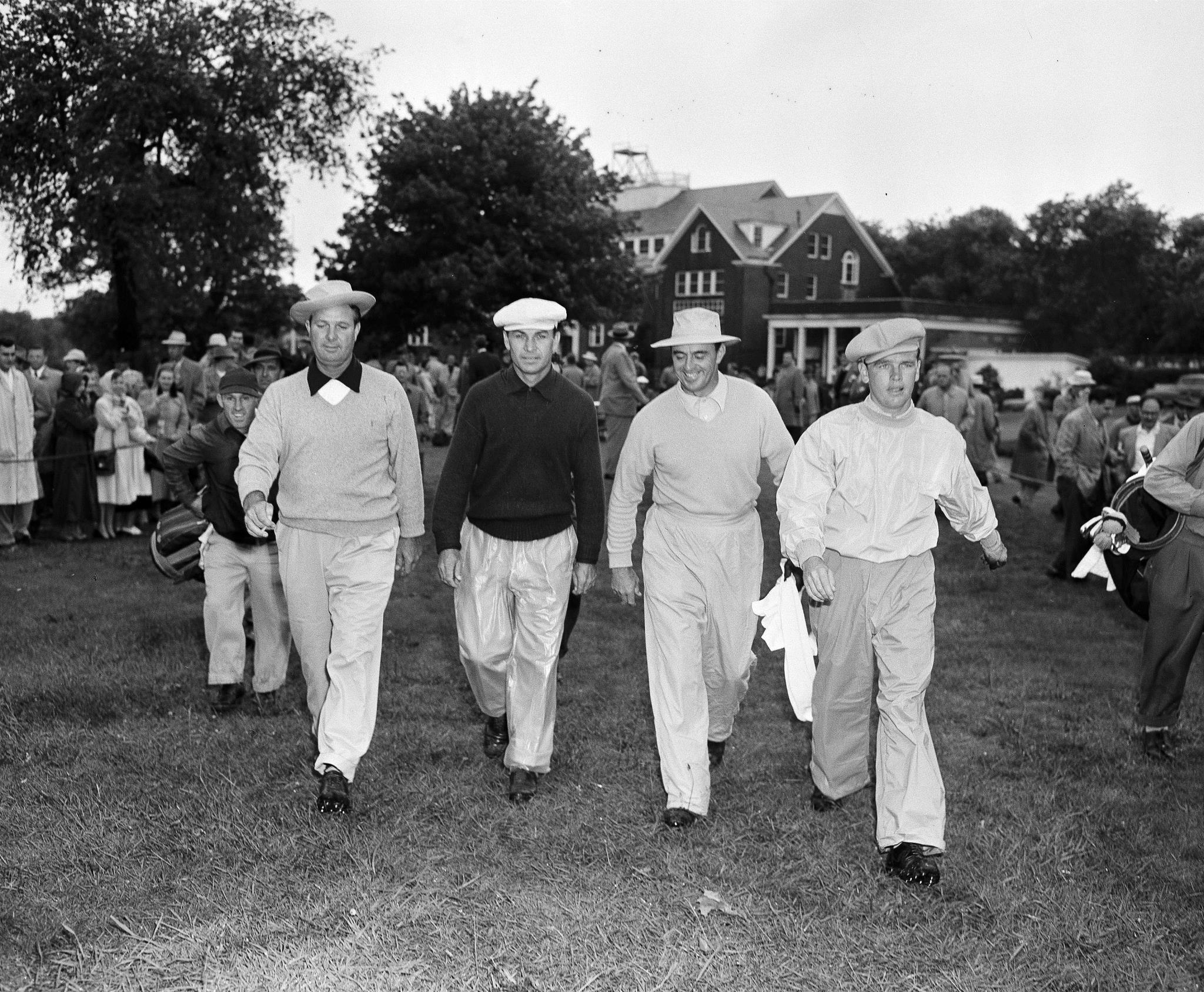
Jimmy Demaret, Ben Hogan, Sam Snead, Jack Burke at 1950 Goodall Palm Beach Round Robin
|
|
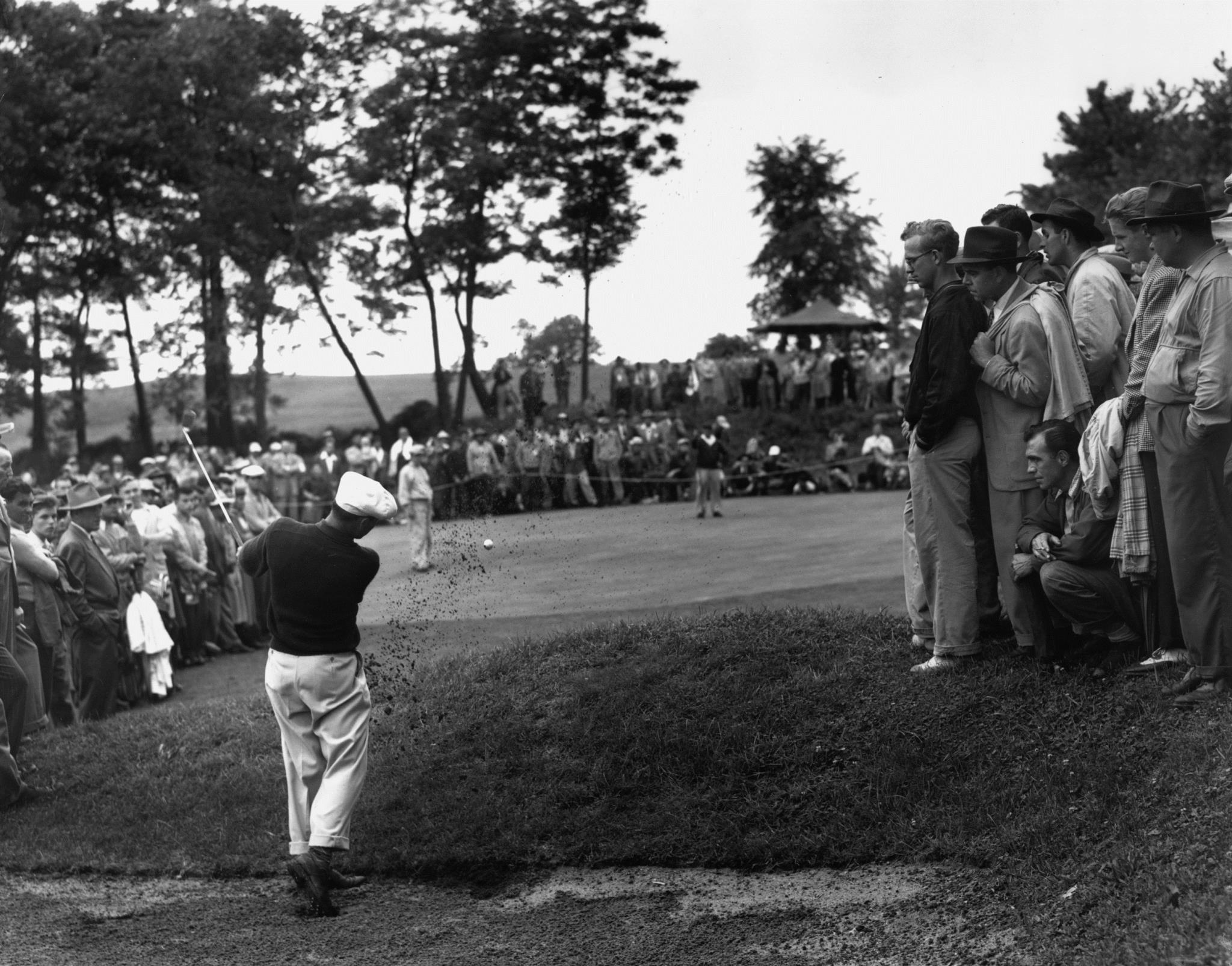 Ben Hogan playing from bunker on 16 in 1950 Ben Hogan playing from bunker on 16 in 1950
|
|
|
|
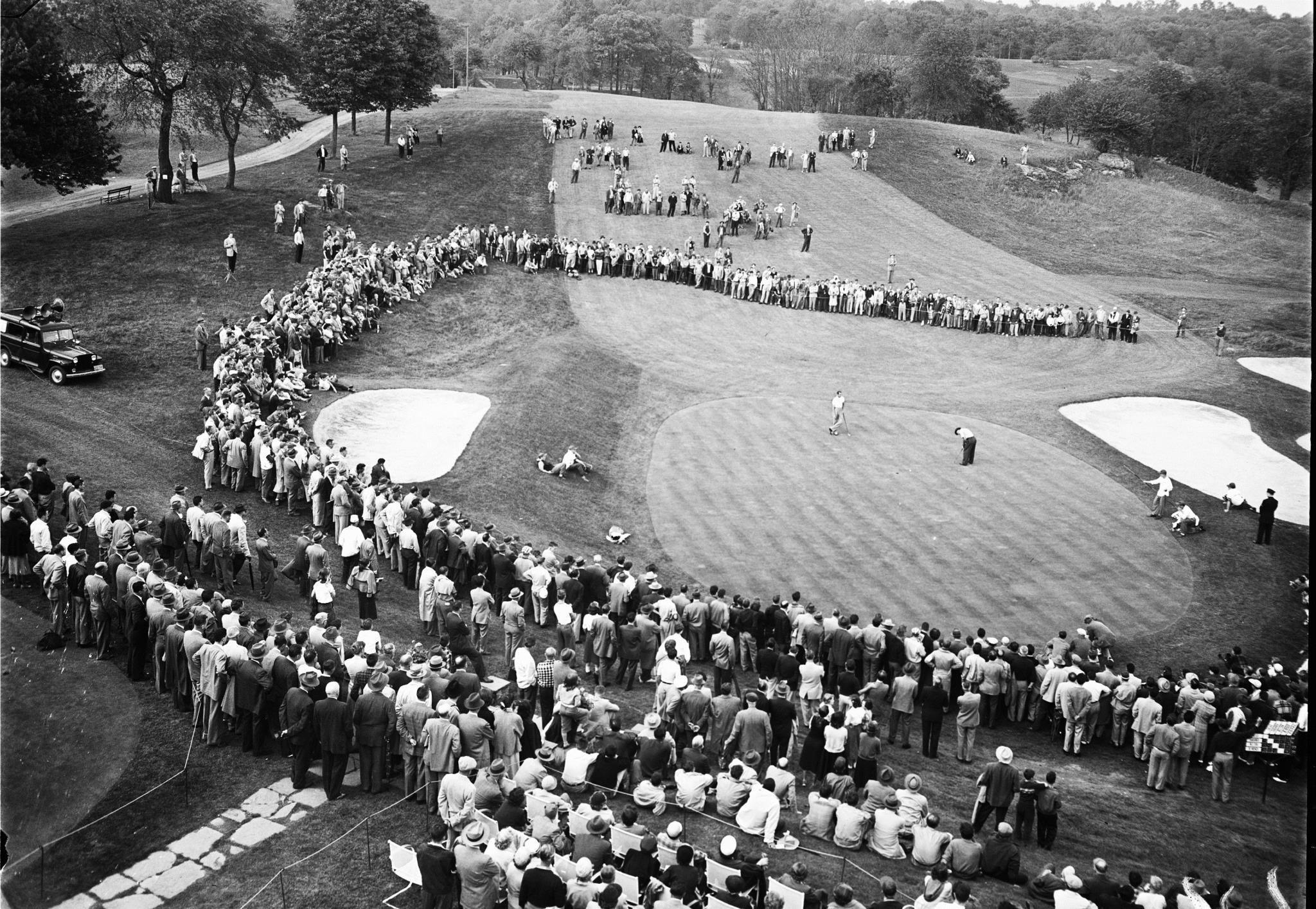
Sam Snead putting on 9th Green at 1952
Goodall Palm Beach Round Robin, which he won that year and in 1957
|
|
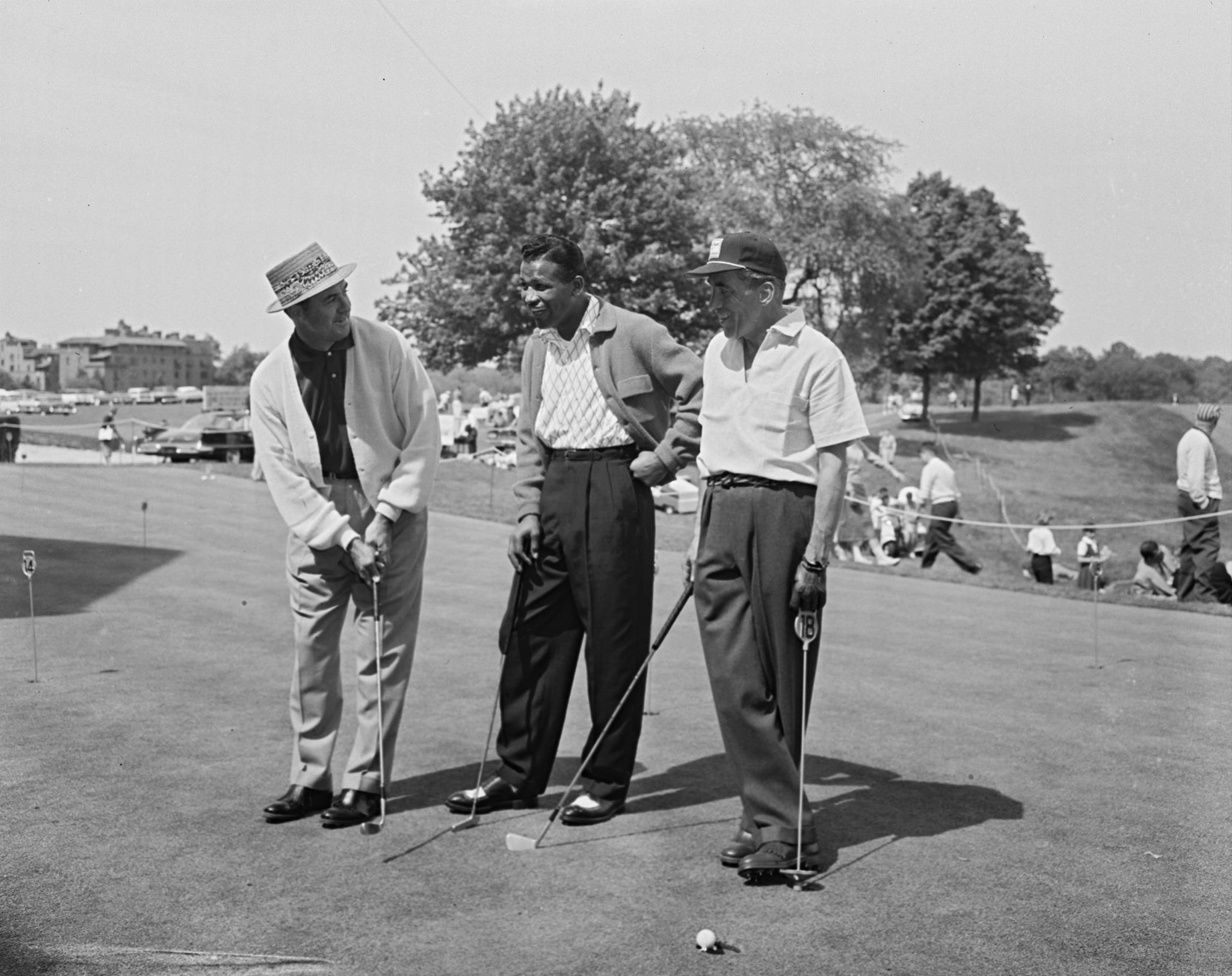 Sam Snead, Sugar Ray Robinson, Ed Sullivan Sam Snead, Sugar Ray Robinson, Ed Sullivan
at Round Robin Celebrities' Day 1957
|
|
Past champions at Wykagyl include Byron Nelson, Sam Snead, Bobby Locke, Lloyd Mangrum, Roberto De Vicenzo, Pat Bradley, JoAnne Carner, Nancy Lopez, Betsy King, Annika Sörenstam and Paula Creamer.
|
|
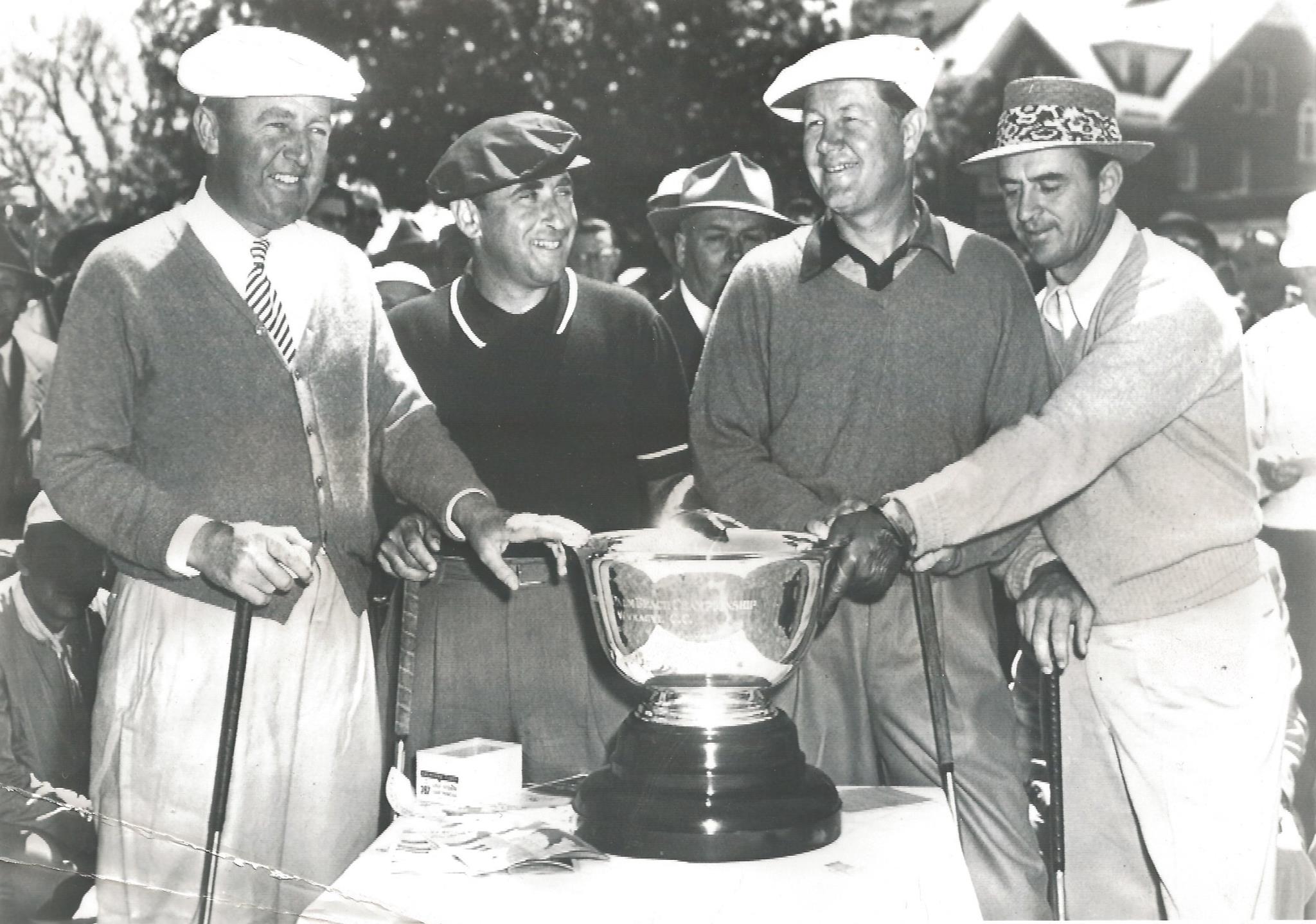
Bobby Locke, defending champion Herman Barron, Byron Nelson, Sam Snead before 1949 Palm Beach Round Robin
|
|
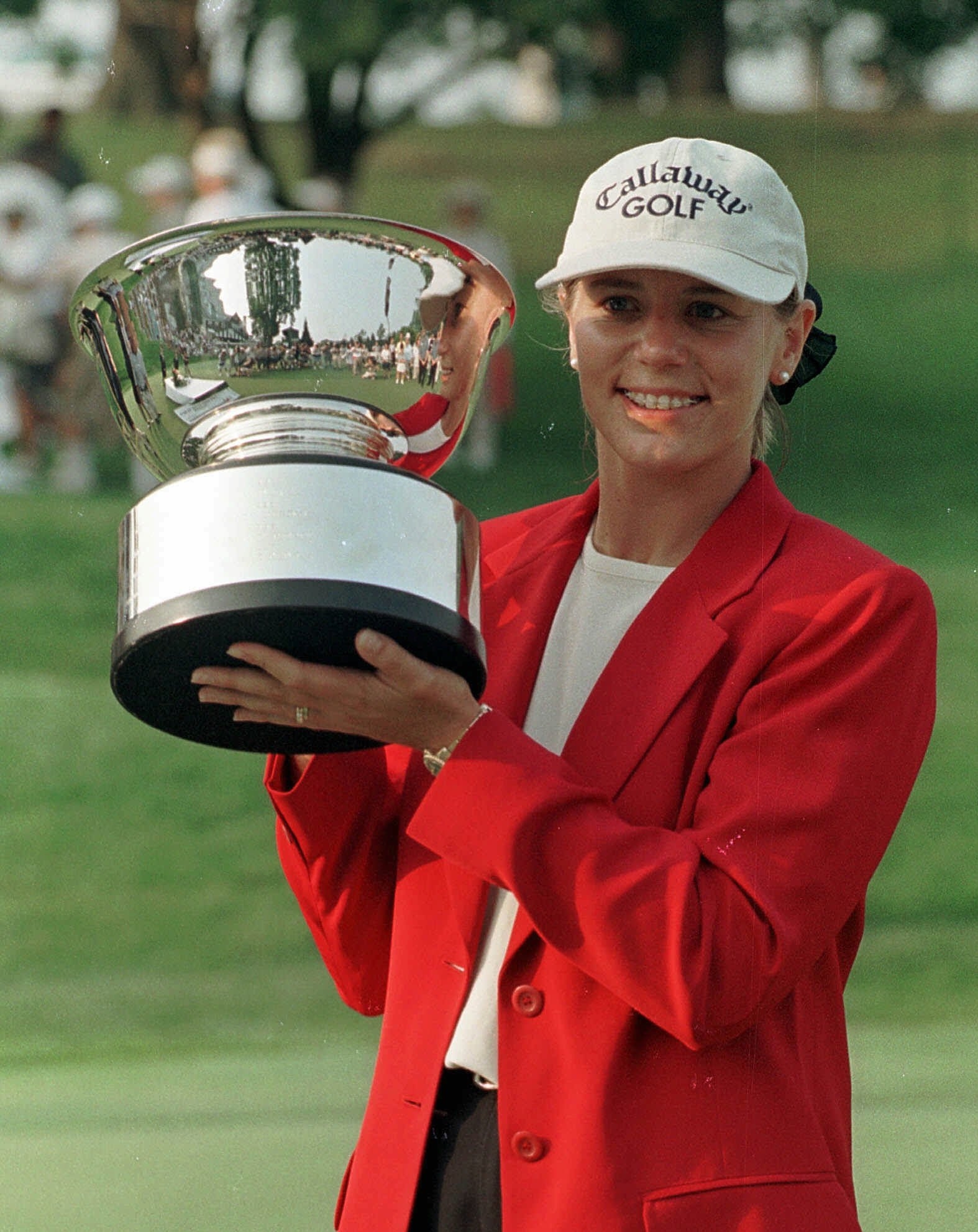 Annika Sörenstam, JAL Classic Champion 1998 & 2000 Annika Sörenstam, JAL Classic Champion 1998 & 2000
|
|
|
|
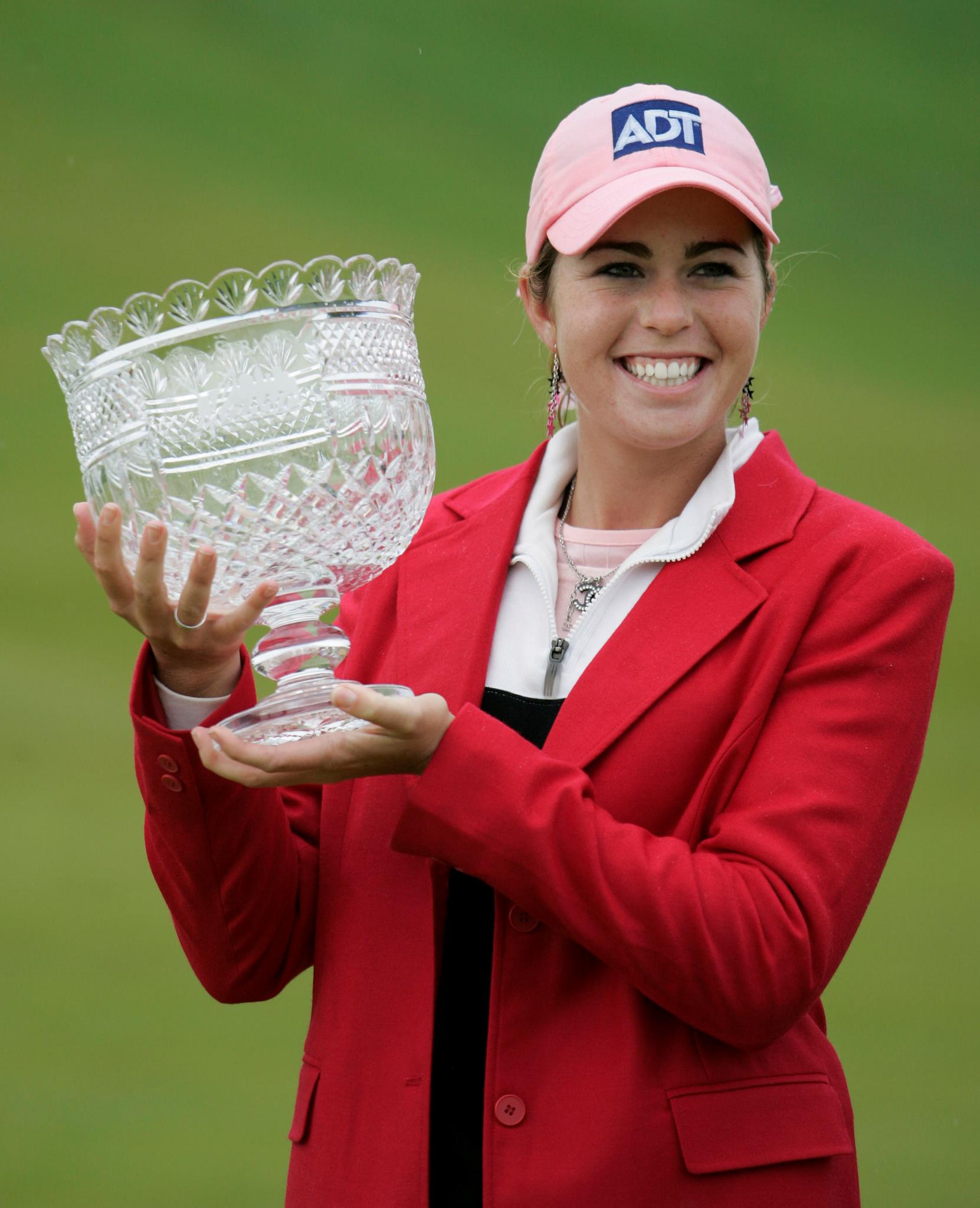
Paula Creamer, Sybase Big Apple Classic Champion 2005 (1st LPGA win)
|
|
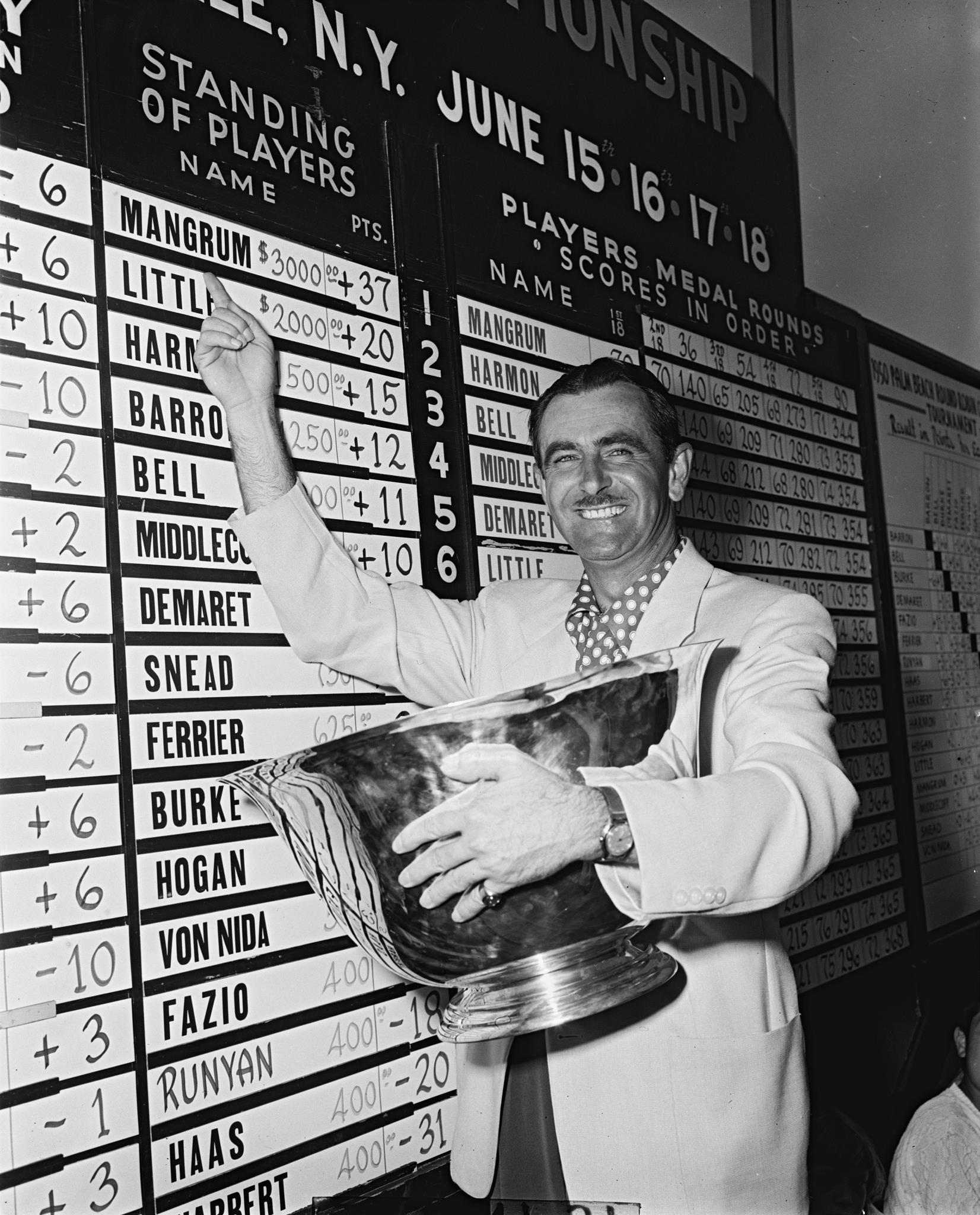
Lloyd Mangrum, Goodall Palm Beach Round Robin Champion 1950
|
|
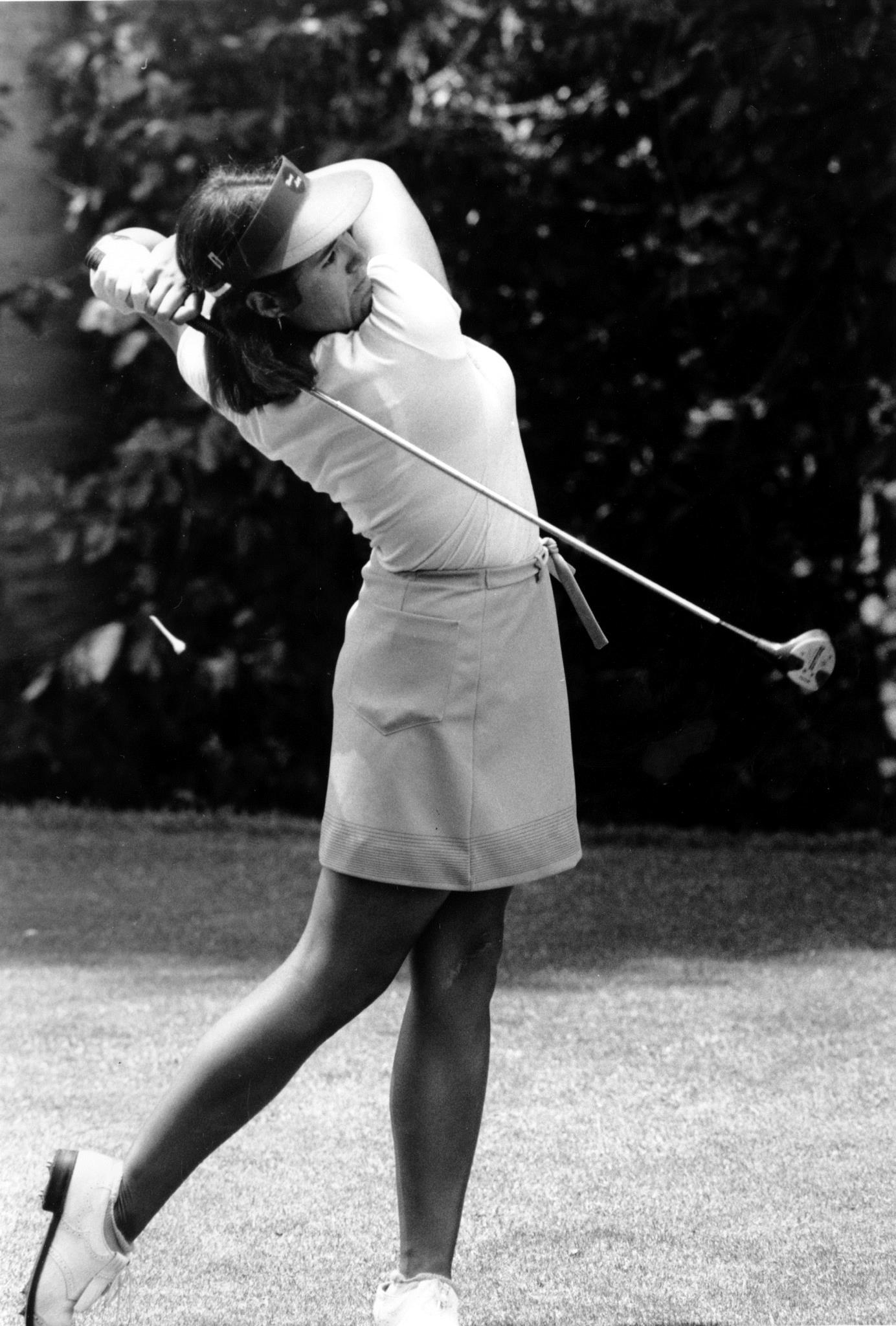
Nancy Lopez, LPGA Golden Lights Champion 1978 & 1979
|
|
While Ben Hogan never won at Wykagyl, he participated in many tournaments here and was photographed stepping into a shot on Tillinghast’s par five 6th hole. It’s a risk/reward shot that has changed little in the intervening sixty years and one members at Wykagyl contemplate daily.
|
|
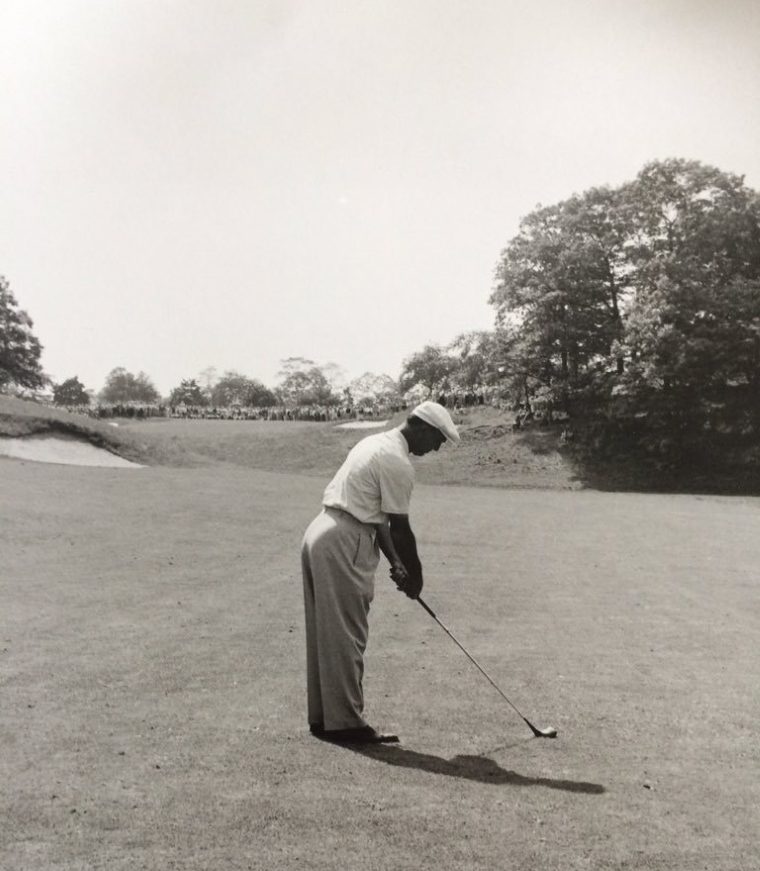
Ben Hogan on 6th Fairway, 1957
|
|
Improvements Over the Years
After operating with the original clubhouse for the first decade or so, Wykagyl decided it needed a larger facility. In the middle of the “boom years” the Club invested $234,000 to build the men’s locker house, a greatly admired structure around the metropolitan area when it opened in October of 1928. Nearly a century later, it is still regarded as one of the finer locker houses in the country.
Two years later, Wykagyl opened a swimming pool, the first club in the Metropolitan area to have one. When fire destroyed the old clubhouse in February of 1931, a decision was made to build a new one. It was completed in 1932 and still serves today as our graceful home.
Improvements continued at an accelerated pace through the 1950's, 60's and 70's. Facilities were upgraded and air conditioning was added to the Clubhouse, the Flood Card Room and Sauna Lounge. Four bowling alleys, which had first been introduced in 1935 to great acclaim (and to which a full-service bar was later added), were upgraded again in 1958, helping to make bowling an exciting winter activity at the Club. Bowling remains one of the club’s most popular non-golf activities to this day. A beautiful new pool was opened during the summer of 1964, adding to the attractiveness of the Club grounds.
|
|
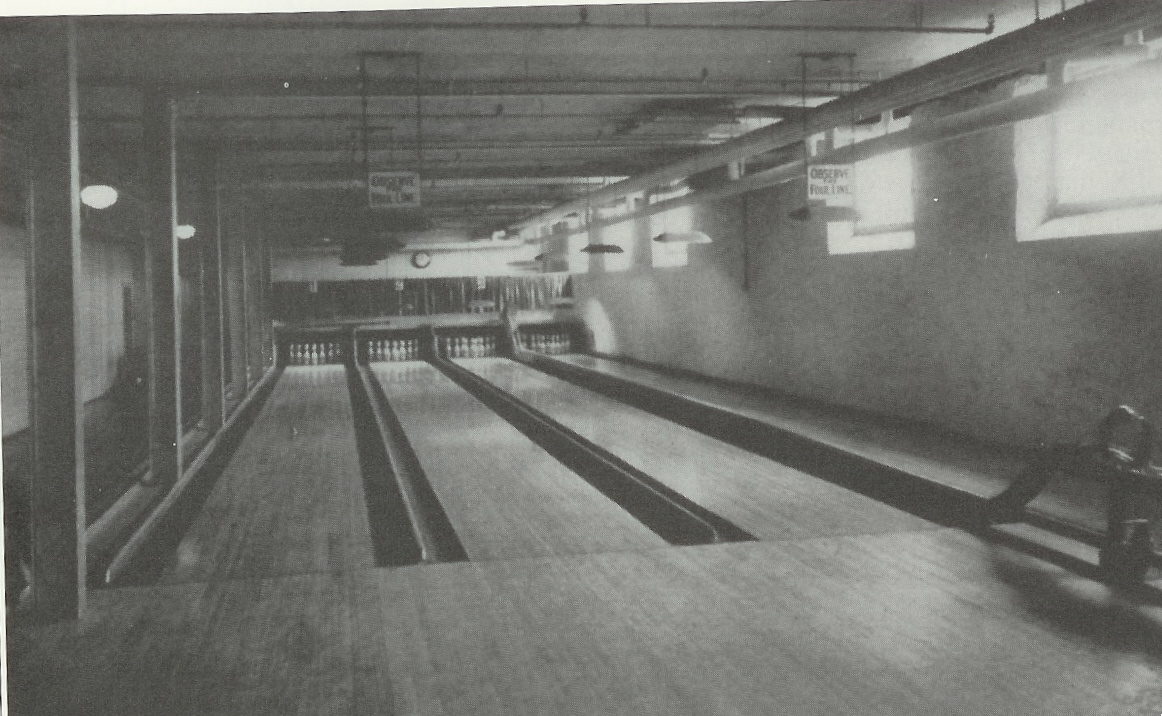
Original Bowling Alley
|
|
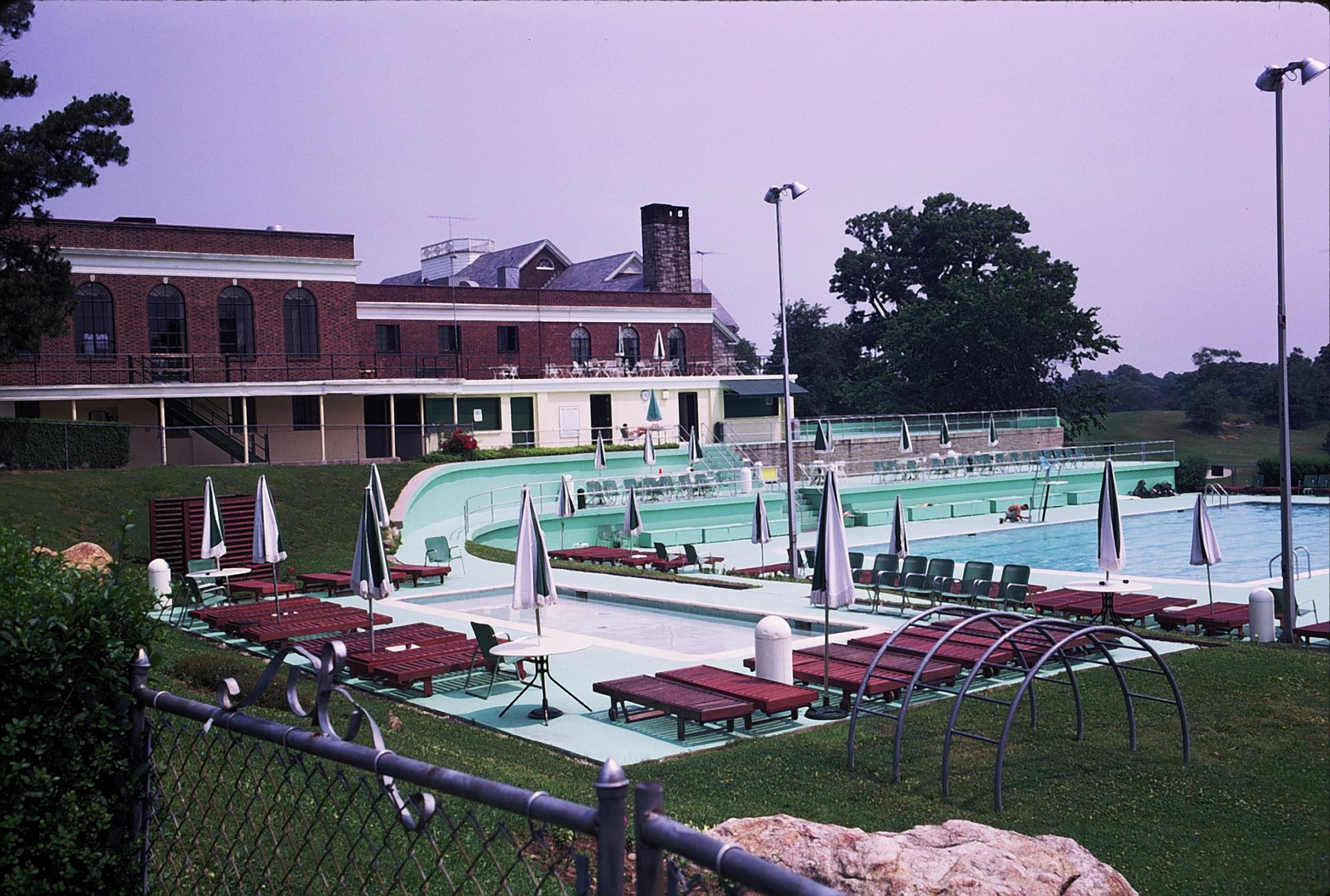
Pool in 1969
|
|
Wykagyl completed a multimillion dollar clubhouse renovation in 2001. With the intent to preserve the unique features of Wykagyl, including the original Men's locker house and bowling alleys, the membership elected to expand the footprint of the Club by constructing a new Mixed Grill, which is the principal dining facility today for the membership. A new and modern Ladies' locker house was constructed on the lower tier.
Coore & Crenshaw Renovation
In 2006, in a continuing effort to maintain the quality of its golf experience and infrastructure, Wykagyl once again commissioned a preeminent architectural firm, Coore & Crenshaw, to spearhead a multimillion dollar renovation.
Coore & Crenshaw's principal objective in the renovation was to present a golf experience that was strategically interesting and playable to golfers of all abilities. In addition to a new irrigation and drainage system, the Coore & Crenshaw team restored character to the course through the removal of hundreds of tall oak trees that had overtaken the property. Thirty new bunkers were added and many others were returned to their original look and feel. The team restored the strategic intent on some holes while improving the playability of others with expanded green complexes and fairway line adjustments that were more receptive and forgiving. Examples of plans are shown below for the 7th, 8th and 15th holes, along with historic aerial photographs. The club maintains its relationship with Coore & Crenshaw to this day.
|
|
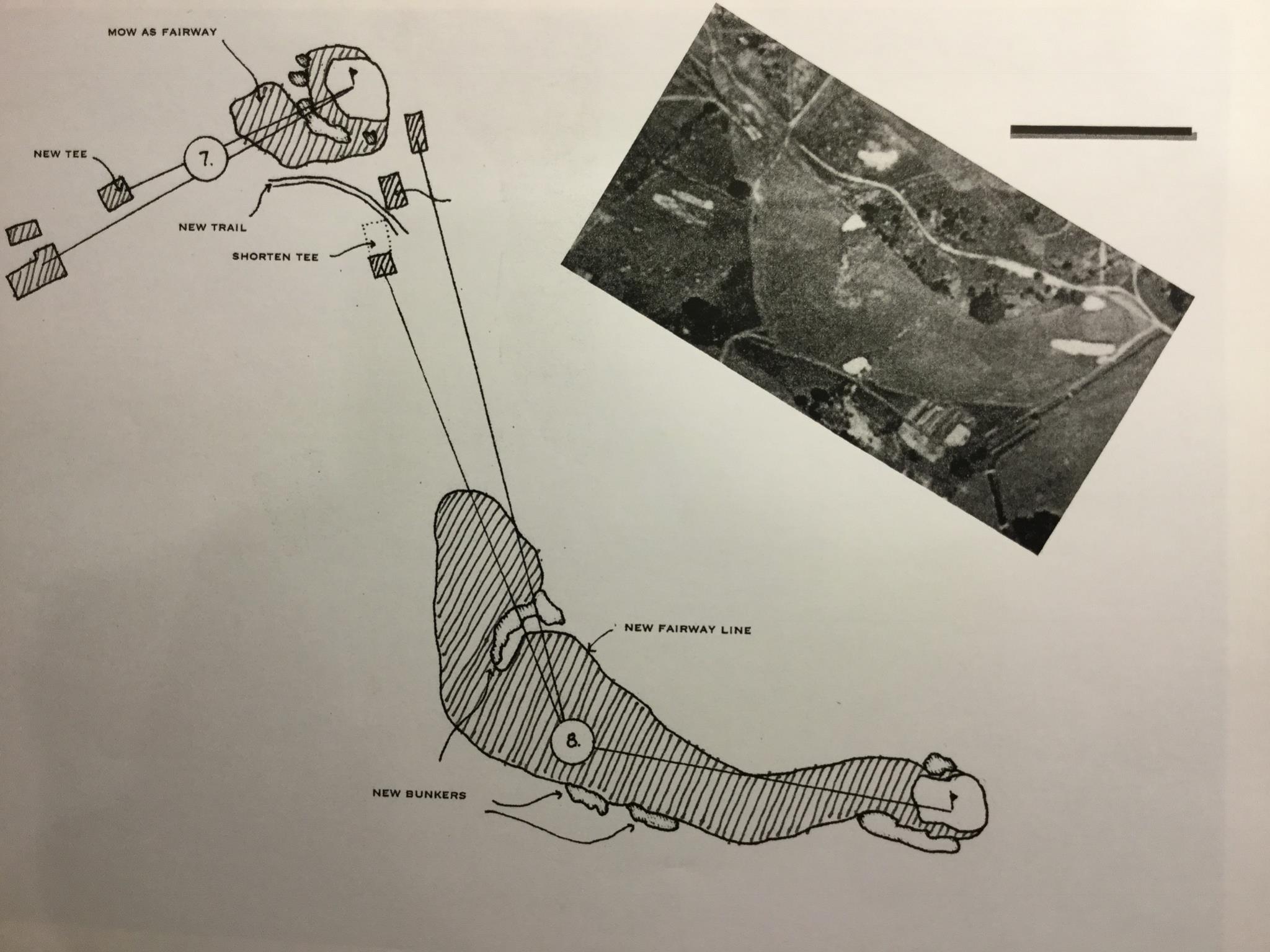
Drawing of Plan for 7th and 8th Holes
|
|
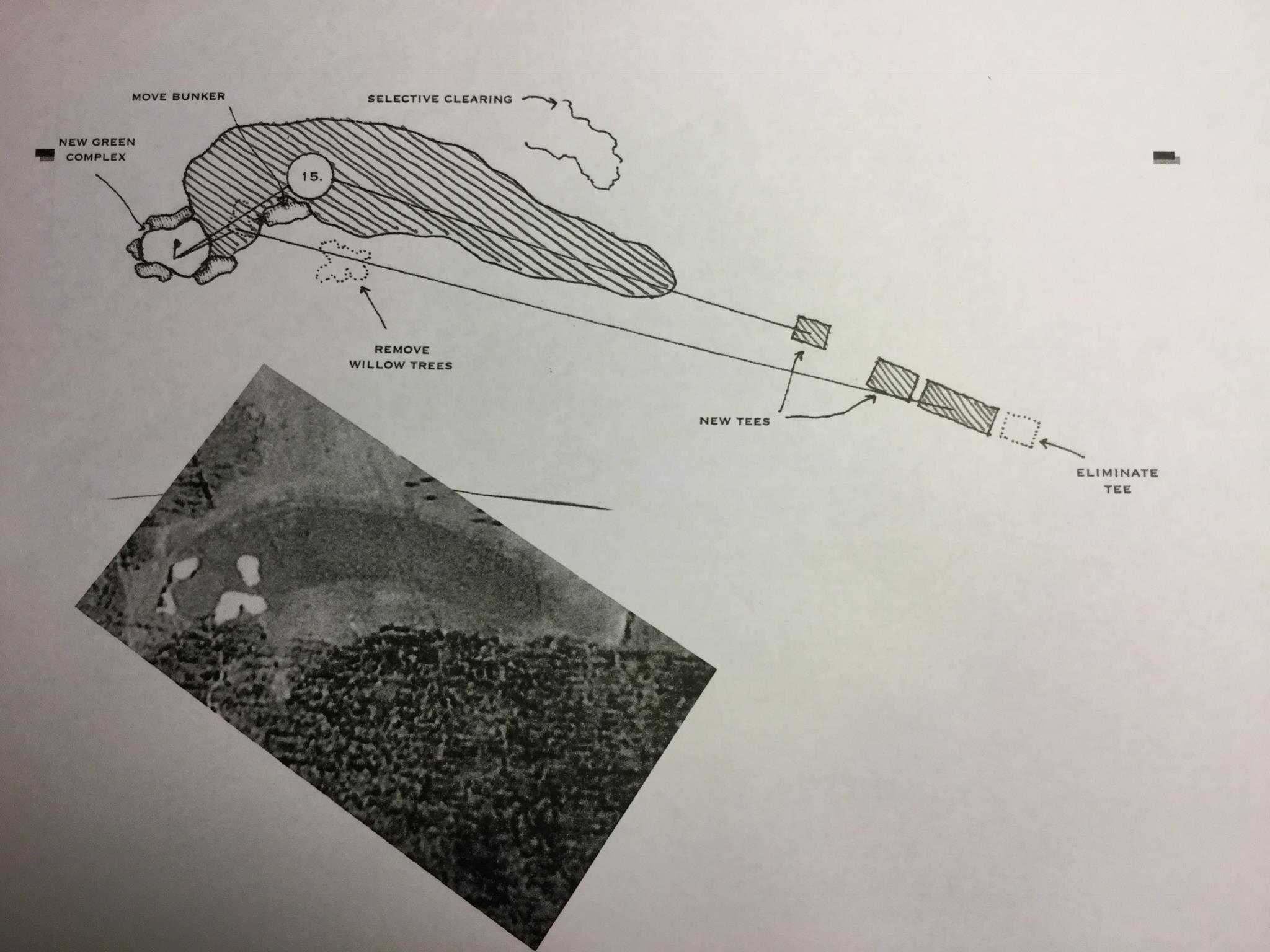
Drawing of Plan for 15th Hole
|
|
The cumulative impact of the restoration and Wykagyl’s commitment to superb conditioning led to the inclusion of Wykagyl in Golfweek’s Top 100 Classic Courses rankings and brought accolades from golf course architecture expert, Ran Morrissett, who profiled the course on GolfClubAtlas in 2016.
Our golf course is a beautiful amalgam of the creativity and ability of some of the greatest golf course designers in the game’s history and presents a memorable experience to any member or guest who walks its fairways.